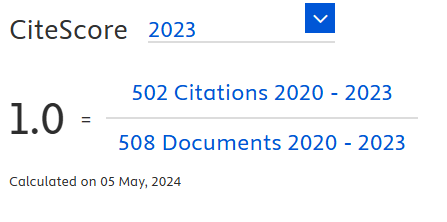Present Status, Practices, Limitations, and Future Prospects of Organic Fruit Production in Nepal
DOI:
https://doi.org/10.18006/2025.13(1).1.10Keywords:
Organic, Certification, Organic farming, Fruit Orchard, PRISMA Model, Cooperatives and NGOsAbstract
Organic fruit production in Nepal has significant potential due to the country's varied agro-climatic conditions and reliance on traditional agricultural practices. However, this sector faces considerable challenges, including high certification costs, limited market access, and inadequate infrastructure. Despite the increasing global demand for organic products and a growing interest among local consumers, only 0.3% of Nepal's agricultural land is certified organic. This review analyzes 27 studies that examine the current status, practices, limitations, and prospects of organic fruit cultivation in Nepal. The findings reveal that smallholder farmers comprise most organic fruit growers, primarily using traditional methods such as composting and animal manure, which align well with organic farming principles. However, the lack of certification limits their access to premium markets. To enhance organic fruit production in Nepal, this review emphasizes the need for policy reforms that simplify certification procedures, improve infrastructure, and strengthen market linkages. Increased involvement of cooperatives and non-governmental organizations (NGOs) can provide smallholder farmers with essential training, technical guidance, and resource access. Furthermore, raising community awareness through targeted initiatives will boost local demand, encouraging more farmers to adopt organic practices. Despite the existing challenges, the study highlights Nepal's strong potential to compete in the global organic marketplace. By addressing key barriers and promoting sustainable farming practices, Nepal can enhance environmental sustainability, improve rural livelihoods, and strengthen its organic fruit industry. This review also presents policy recommendations to foster a more robust and inclusive organic farming system in Nepal.
References
Acharya, L. N., & Atreya, P. N. (2012). Fruit development in Nepal: Past efforts, present status, and future needs/way forward. Proceedings of the Eight National Horticulture Workshop, Nepal. Retrieved from https://horticulturenepal.org/uploads/ main_attachment/1643013469_Proceedings%20of%20the%20%20Eight%20%20National%20Horticulture-133-147.pdf. Retrieved September 2024.
Alves, D. S., & Ascari, J. (2019). Use of Natural Chemical Products for Pest Control. In B. Souza, L. Vázquez, & R. Marucci (eds) Natural Enemies of Insect Pests in Neotropical Agroecosystems (pp. 479–488). Springer, Cham. https://doi.org/10.1007/978-3-030-24733-1_38 DOI: https://doi.org/10.1007/978-3-030-24733-1_38
Atreya, K., Subedi, B. P., Ghimire, P. L., Khanal, S. C., & Pandit, S. (2020). A review on history of organic farming in the current changing context in Nepal. Archives of Agriculture and Environmental Science, 5(3), 406-418. DOI: https://doi.org/10.26832/24566632.2020.0503024
Baig, A., Ali, G., & Raza, H. (2022). Assessment of the organic potential in Gilgit-Baltistan. International Centre for Integrated Mountain Development (ICIMOD). DOI: 10.53055/ICIMOD.786
Banjara, R. K. (2016). Opportunity of organic farming to improve the socio-economic life of Nepalese farmers. European Journal of Agriculture and Forestry Research, 4, 22-31.
Banjara, R. K., & Poudel, M. (2016). Sustainable model of organic agriculture: a case study of Nepalese farmers. Journal of Advanced Academic Research, 3(1), 142-163. DOI: https://doi.org/10.3126/jaar.v3i1.16624
Baral, P., Paudel, R., Kharal, S., & Khadka, A. (2020). Organic agriculture in Nepal: Policies and practices. Journal of the Institute of Agriculture and Animal Science, 36, 279-289. DOI: https://doi.org/10.3126/jiaas.v36i1.48430
Barański, M., Srednicka-Tober, D., Volakakis, N., Seal, C., Sanderson, R., et al. (2014). Higher antioxidant and lower cadmium concentrations and lower incidence of pesticide residues in organically grown crops: a systematic literature review and meta-analyses. The British journal of nutrition, 112(5), 794–811. https://doi.org/10.1017/S0007114514001366. DOI: https://doi.org/10.1017/S0007114514001366
Böhme, M. H., & Dimitrov-Skatov, A. G. (2018). Investigations to biological and organic treatments against pests in vegetable cultivation. IOP Conference Series: Earth and Environmental Science, 215, 012012. https://doi.org/10.1088/1755-1315/215/1/012012 DOI: https://doi.org/10.1088/1755-1315/215/1/012012
Chand, P. B., Joshi, K., Thapa, R., Lamsal, A., & Chauhan, B. (2022). Factors Affecting The Adoption Of Organic Farming In Farwestern Hill, Darchula District Of Nepal. Tropical Agroecosystems, 3(1), 16-22. DOI: https://doi.org/10.26480/taec.01.2022.16.22
Chandran, C. S., Thomas, S., & Unni, M. R. (Eds.). (2019). Organic farming: New advances towards sustainable agricultural systems. Springer. DOI: https://doi.org/10.1007/978-3-030-04657-6
Dahal, S., Dangi, B., Dangi, R. K., Bista, P., Bhandari, A., Adhikari, P., &Bhattarai, M. (2023). Determinants of adoption of multiple sustainable agriculture practices among mandarin producing farmers in Salyan District of Karnali Province, Nepal. European Journal of Sustainable Development Research, 7(4), em0230. https://doi.org/10.29333/ejosdr/13440. DOI: https://doi.org/10.29333/ejosdr/13440
De Wilde, N. A., Gubbels, T. H., Heinen, D., & Arnabal, E. H. (2024). Professional apiculture in the Netherlands: sector analysis. Wageningen University & Research.
Demo, A. H., & Bogale, G. A. (2024). Enhancing crop yield and conserving soil moisture through mulching practices in dryland agriculture. Frontiers in Agronomy, 6. https://doi.org/10.3389/fagro.2024.1361697 DOI: https://doi.org/10.3389/fagro.2024.1361697
Food and Agriculture Organization of the United Nations. (2023). Agricultural production statistics (2000–2022). Retrieved from https://www.fao.org/statistics/highlights-archive/highlights-detail/ agricultural-production-statistics-(2000-2022)/ November 21, 2024.
Ghimire, D., & Khadka, K. (2023). Consumer Willingness to Pay for Pesticides-Free Fruits and Vegetables (A Case Study of Bhaktapur District). International Journal of Atharva, 1(1), 83–95. https://doi.org/10.3126/ija.v1i1.58846 DOI: https://doi.org/10.3126/ija.v1i1.58846
Granatstein, D., & Kirby, E. (2016). Status of organic production of temperate fruits in the USA. Eco fruit. Retrieved from http://www.ecofruit.net/wp-content/uploads/2020/04/17_Granatstein _128bis134.pdf
Granatstein, D., Kirby, E., & Willer, H. (2013). Global area and trends of organic fruit production. ActaHortic, 1001(1001), 383-394. DOI: https://doi.org/10.17660/ActaHortic.2013.1001.45
Gubbuk, H., Polat, E., & Pekmezci, M. (2004). Organic fruit production in Turkey. Journal of Fruit and Ornamental Plant Research, (Special ed), 12, 23-29.
Hijazi, Y. (2021). Converting Avocado Farming in Lebanon from Conventional to Organic: The Economic Perspective. Master dissertation. Retrieved from https://api.pageplace.de/preview/ DT0400.9783346551924_A42842944/preview-9783346551924_ A42842944.pdf
Lamy, F. C., Lamy, F. C., Poinsot, D., Poinsot, D., Cortesero, A. M., Cortesero, A. M., Dugravot, S., & Dugravot, S. (2017). Artificially applied plant volatile organic compounds modify the behavior of a pest with no adverse effect on its natural enemies in the field. Journal of Pest Science, 90(2), 611–621. https://doi.org/10.1007/S10340-016-0792-1 DOI: https://doi.org/10.1007/s10340-016-0792-1
M’sakni, N. H., Alsufyani, T., Alotaibi, N. J., Al-Malki, M. A. S., & Alghamdi, E. M. (2024). Interspecific Eavesdropping on Chemical Communication in the Field between Taif Pomegranate, Aphis punicae, Enemies, and Protectors. Preprint available on Research Square https://doi.org/10.21203/rs.3.rs-4008859/v1 DOI: https://doi.org/10.21203/rs.3.rs-4008859/v1
Mairata, A., Labarga, D., Puelles, M., Rivacoba, L., Martín, I., Portu, J., & Pou, A. (2024). Impact of organic mulches on grapevine health, growth and grape composition in nutrient-poor vineyard soils. OENO One, 58(4). https://doi.org/10.20870/oeno-one.2024.58.4.8265 DOI: https://doi.org/10.20870/oeno-one.2024.58.4.8265
Mondal P. (2012). Major problems and constraints for organic farming in India. Retrieved from http://www.yourarticlelibrary.com/essay/major-problems-and-constraints-for-organicfarming-in-india/25013 access on December, 2024.
Muhammad, A., & Umma, D. M. B. B. (2024). Challenges of Implementing Anchor Borrower Programme for Food Security in Nasarawa State, Nigeria. Journal of Business and Innovation in Emerging Economies, 8(9), 594–604. DOI: https://doi.org/10.47772/IJRISS.2024.809054
Munna, M. R., Trisa, S. A., Islam, M. M., Islam, M. J., Pal, D. C., & Rahman, M. K. (2021). Commercially available organic manures on growth, yield and nutrient content of Burmese Grapes (Baccaurea ramiflora). Journal of Biodiversity Conservation and Bioresource Management, 7(1), 63-72. DOI: https://doi.org/10.3329/jbcbm.v7i1.57124
Neeson, R. (2008). Organic fruit production. Orange: New South Wales Department of Primary Industries. Available at http://www. dpi. nsw. gov. au/__data/assets/pdf_file/0020/237800/organic-fruit-production. pdf.RetrievedSeptember 2024.
Neilsen, G. H., Lowery, D. T., Forge, T. A., & Neilsen, D. (2009). Organic fruit production in British Columbia. Canadian Journal of Plant Science, 89(4), 677-692. DOI: https://doi.org/10.4141/CJPS08167
Pathak, R. K., & Ram, R. A. (2004). Manual on Vedic Krishi. Central Institute for Subtropical Horticulture.
Peck, G. M., Merwin, I. A., Watkins, C. B., Chapman, K. W., & Padilla-Zakour, O. I. (2009). Maturity and quality of ‘Liberty’apple fruit under integrated and organic fruit production systems are similar. HortScience, 44(5), 1382-1389. DOI: https://doi.org/10.21273/HORTSCI.44.5.1382
Paudel, R., Nepali, P. B., Panta, H. K., & Acharya, G. D. (2023). Transforming Food, Embracing Inclusivity: Nepal’s Journey towards Sustainable Food Systems. Orchid Academia Siraha, 2(1), 53–61. https://doi.org/10.3126/oas.v2i1.65603. DOI: https://doi.org/10.3126/oas.v2i1.65603
Ram, R. A., & Kumar, A. (2019). Growing fruit crops organically: challenges and opportunities. Current Horticulture, 7(1), 3-11. DOI: https://doi.org/10.5958/2455-7560.2019.00001.3
Regmi, K. R., Pokhrel, A., Regmi, S. D., Kandel, S., & Lamichhane, J. (2023). Assessment on Consumers Willingness to Pay for Organic Products in Rupandehi District, Nepal. Journal of the Institute of Agriculture and Animal Science, 37(1), 19–30. https://doi.org/10.3126/jiaas.v37i1.56970 DOI: https://doi.org/10.3126/jiaas.v37i1.56970
Renzi, N., Pacetti, T., Lompi, M., Castelli, G., Caporali, E., Setti, A., & Bresci, E. (2024). Water footprint and water productivity analysis of an alternative organic mulching technology for irrigated agriculture. EGU General Assembly 2024, Vienna, Austria, 14–19 Apr 2024, EGU24-8048, https://doi.org/10.5194/egusphere-egu24-8048 DOI: https://doi.org/10.2139/ssrn.4904994
Rokaya, A. B., & Pandey, A. C. (2023). Analysis of Entrepreneurial Activities for Promoting Organic Products in Karnali Province. KMC Journal, 5(2), 119-138. DOI: https://doi.org/10.3126/kmcj.v5i2.58234
Rozpara, E., & Głowacka, A. (2012). The usefulness of stone fruit species and cultivars for organic fruit production in Poland. In Proceedings of the 15th International Conference on Organic Fruit Growing (pp. 20-22). Hohenheim, Germany.
Schupp, J., & Moran, R. (2004). Mineral nutrient management for organic fruit production. Pennsylvania Fruit News, 84, 14-19.
Shaltout, F. A. (2024). Preservatives Added to Food Preservation and Their Impact Against the Bacteria. Clinical Research and Clinical Reports. Retrieved from https://www.clinicsearchonline.org/uploads/articles/1733887890CRC-24-RA-89-Galley_Proof.pdf accessed on September, 2024
Sharma, S. K. (2014). Family as an autonomous institution for local agricultural resources governance: discourse on organic agriculture development in the mountains of Nepal. International Journal of Agricultural Resources, Governance and Ecology, 10(4), 325-334. DOI: https://doi.org/10.1504/IJARGE.2014.066254
Shashank, D. U., Sujatha, G. S., Sai Teja, K. S., Hema, A., Mishra, R., Abinaya, S., Shewta, K., & Kumar, G. A. (2024). A Comprehensive Review of Advances in Semiochemical Exploitation for Insect Pest Management. Journal of Advances in Biology & Biotechnology, 27(9), 845–863. https://doi.org/10.9734/jabb/2024/v27i91357 DOI: https://doi.org/10.9734/jabb/2024/v27i91357
Shcherbatyuk, N., Wortman, S. E., McFadden, D., Weiss, B., Weyers, S. L., et al. (2024). Alternative and Emerging Mulch Technologies for Organic and Sustainable Agriculture in the United States: A Review. Hortscience, 59(10), 1524–1533. https://doi.org/10.21273/hortsci18029-24 DOI: https://doi.org/10.21273/HORTSCI18029-24
Shrestha, R. M. (2021). Factors Affecting Consumer Purchase Intentions of Organic Products in Lalitpur District. Pravaha, 27(1), 125-130. DOI: https://doi.org/10.3126/pravaha.v27i1.50626
Singh, K., Kumar, S., Pradhan, S., & Patidar, O. P. (2018). Organic Farming for Sustainable and Nutritional Fruit Production in India: A Review. International Journal of Current Microbiology and Applied Sciences, 7(5), 3033-3039. DOI: https://doi.org/10.20546/ijcmas.2018.705.354
Tamang, S., Dhital, M., & Acharya, U. (2011). Status and scope of organic agriculture in Nepal. Food and Sustainable Agriculture Initiative, Forest Action. Retrieved from https://www.academia.edu/download/31431148/1._2011_Scopes_and_Challanges_of_Organic_Agriculture_in_Nepal_3_June.pdf accessed on 14 October 2024.
Tamm, L., Häseli, A., Fuchs, J. G., Weibel, F. P., & Wyss, E. (2002). Organic fruit production in humid climates of Europe: Bottlenecks and new approaches in disease and pest control. Acta Horticulturae, 638, 333-339. DOI: https://doi.org/10.17660/ActaHortic.2004.638.44
Uma, S., & Kumar, P. S. (2025). Organic Production of Fruits: Issues, Challenges, and Opportunities. In H. Pathak, W.S. Lakra, A. Gopalakrishnan, & K.C. Bansal (Eds) Advances in Agri-Food Systems. Springer, Singapore. https://doi.org/10.1007/978-981-96-0759-4_9. DOI: https://doi.org/10.1007/978-981-96-0759-4_9
Upadhyay, J. P., & Niraula, B. (2023). Consumer Purchase Intention towards Organic Food Products in Nepal. Pravaha, 29(1), 103–110. https://doi.org/10.3126/pravaha.v29i1.71410 DOI: https://doi.org/10.3126/pravaha.v29i1.71410
Van Zonneveld, M., Volk, G. M., Dulloo, M. E., Kindt, R., Mayes, S., & others. (2023). Safeguarding and using fruit and vegetable biodiversity. In J. von Braun, K. Afsana, L.O. Fresco, & M.H.A. Hassan (Eds.) Science and Innovations for Food Systems Transformation (pp. 553–567). Springer, Cham. https://doi.org/10.1007/978-3-031-15703-5_30. DOI: https://doi.org/10.1007/978-3-031-15703-5_30
Weibel, F. P., Häseli, A., Schmid, O., & Willer, H. (2002). Present status of organic fruit growing in Europe. Acta Horticulturae, 638, 375-385. DOI: https://doi.org/10.17660/ActaHortic.2004.638.49
Weibel, F. (2002). Organic fruit production in Europe. The Compact Fruit Tree, 35(3), 77-82.
Willer, H., Meier, C., Schlatter, B., & Trávníček, J. (2022). The state and evolution of organic fruit and vegetables: Production and market at a world scale. In W. W. Ocimati, T. Lecot, & Lehrer, K. (Eds.) XXXI International Horticultural Congress (IHC2022): XII International Symposium on Banana: Celebrating Banana Organic Production. 1367 edition. Acta Hortic. International Society for Horticultural Science, Leuven, pp. 1-12. DOI: https://doi.org/10.17660/ActaHortic.2023.1367.1
Willer, H., Trávníček, J., & Schlatter, S. (2024). The world of organic agriculture: Statistics and emerging trends 2024. Research Institute of Organic Agriculture (FiBL) & IFOAM – Organics International. Retrieved from https://www.fibl.org/en/shop-en/1747-organic-world-2024.
Downloads
Published
How to Cite
Issue
Section
License
Copyright (c) 2025 Journal of Experimental Biology and Agricultural Sciences

This work is licensed under a Creative Commons Attribution-NonCommercial 4.0 International License.












